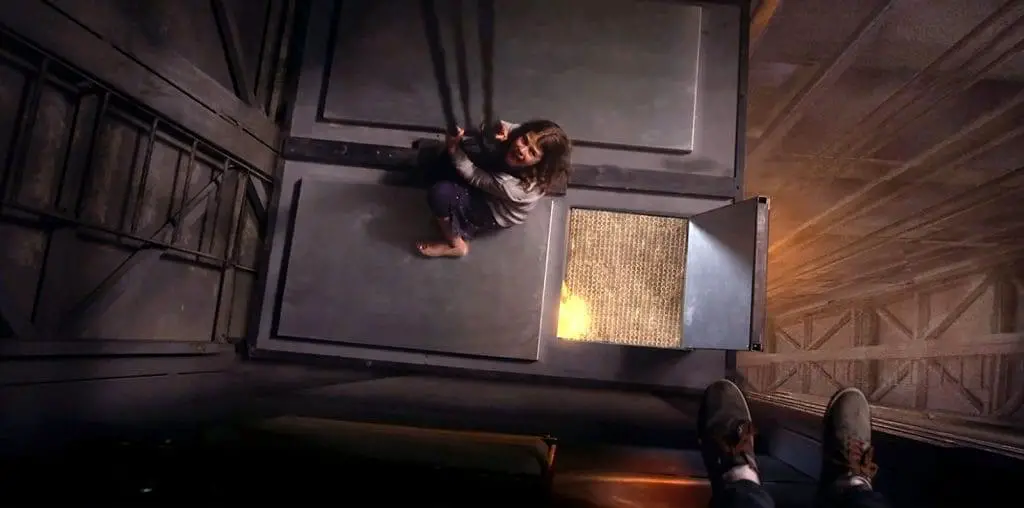
Rule 3: It’s Not Enough To Be Entertaining. Your Story Must Be Useful.
Think of any movie that has endured in your library of personal favorites, and I promise you that if you consider it for long enough, you’ll realize that there’s something within its contents that has been useful to you. I’m not talking about a message or a lesson, but rather something about a character or scenario that gave you some context for your own life. A situation or attitude that you role-played in your own imagination and as a result benefited from in the development of your own character.
This is why, whether they know it or not, people are attracted to horror movies. Without any risk of personal harm, they can sit for a spell and watch a surrogate stumble into extreme and unknown danger, activating thought processes and endorphins in a shared exercise on survival and pain, maybe even death. When the experience is over, they get to walk away unharmed, maybe a little bit more cautious from that point on, or maybe just feeling some catharsis from an opportunity to laugh in the face of chaos, albeit from a safe distance.
The same goes for comedies. We can laugh at a foolish situation because we’ve encountered something similar or maybe just observe a fool so we can later avoid their sorry situation and the humiliation of being laughed at like them.
Heroes can set examples of how to get hit and get back up. Dramas can caution us against our own mortal flaws. A fairy tale can offer the young and old alike metaphors for the human condition.
More importantly, for you as a filmmaker, they can give you a foundation for building your narrative in a way that won’t be boring.
Rule 4: Your Tools, Cast and Crew Are Only As Good As Your Vision
Okay, so you know your medium and you have something useful to say, now it’s time to set your destination, or rather to get those moving pictures on the screen. At some point you’re going to have a crew and actors standing in front of you waiting for your instructions, so you’d better know what to tell them. Be ready to get ahead of their questions by asking them of yourself, beforehand.
What camera, lights, or microphones to use will be answered as you go along your journey, or you’ll find people who can answer them for you. What matters more than any of that is in your mind’s eye. There are scenes, moments, lines of dialogue, shots that are in your imagination that got you excited enough to want to make a movie in the first place. How do you know brute force them into existence?
What is in the frame? What is the mood? Who are the characters, and what do they want?
You have to be able to visualize and quantify it so that the people working with you can help you get it. Speak plainly and also be ready to listen and adjust. Every situation will have obstacles but often will also offer you new opportunities and ideas. It’s daydreaming on a schedule but you have to communicate it in real time, as you do. The movie can be abstract but on set you need to be precise.
“Hey, when you say that line, on the last word, I want to hear a note of regret.” Actors can use that far more easily than telling them to think of when their favorite pet died. They trained to perform regret. They don’t need you to tell them how to do their job.
“Those rocks are made of cardboard, and I can tell when I look through the camera. Let’s bring the lights down a bit and soften the focus.” Don’t ask what to do unless you don’t know the answer. You see it in your head. It’s your job to know the answer. Describe it so your crew can give it to you.
I draw storyboards showing my shots and how I want them framed. If you can’t draw, you can get some action figures and photograph them. Some directors are just really good at pointing.
Communicate your vision or die.
Rule 5: Shoot For The Edit
This is a very simple one. Once all of your footage is “in the can” it has to cut together in a way that flows. You have to know where one shot ends and the next picks up, in order for you to edit it together seamlessly. If you do it right, the audience will forget that they’re watching a movie and it becomes an experience.
To do this I have a couple of rules I follow. When you hit the record button, start the scene early. Tell your actors to wait a few moments after you call action and let themselves ease into the moment. Then when the scene is done, let the camera keep rolling.
I call this arriving early and leaving late.
I do the opposite when editing. I cut so that the audience is coming in late and ending the shot before it has a chance to get boring because having those extra bits that aren’t in the scene give them the impression that the action isn’t starting and stopping with each cut. It gives you the freedom to find a rhythm that works for you and the audience.
However, this is an art. Editing is knowing what’s unnecessary to a scene and what’s giving a moment room to breathe.



You a******s are trash for using AI art.
AI-generated artwork is only possible because of the wholesale theft of millions of artists’ intellectual property. When you use it instead of paying human artists, you are complicit in that crime. Any publication that engages in such practices disdains and disrespects art and artists.
The idea that AI is some form of theft is based on old misnomers perpetuated in its early days and has been debunked. I addressed this in my previous article and will elaborate in my future writings. Stay tuned.